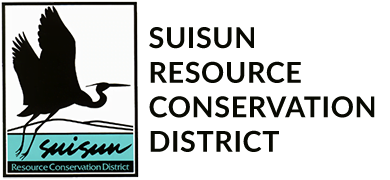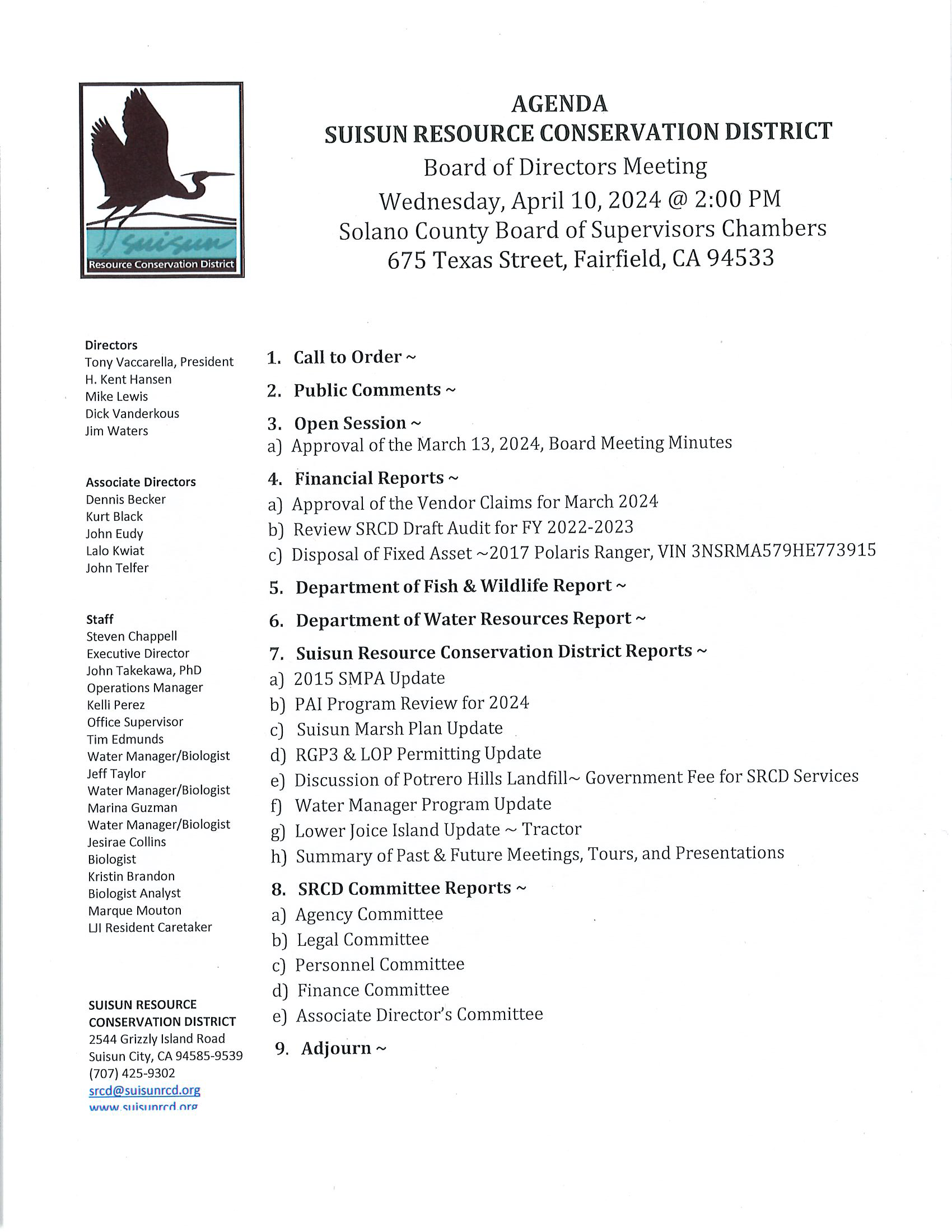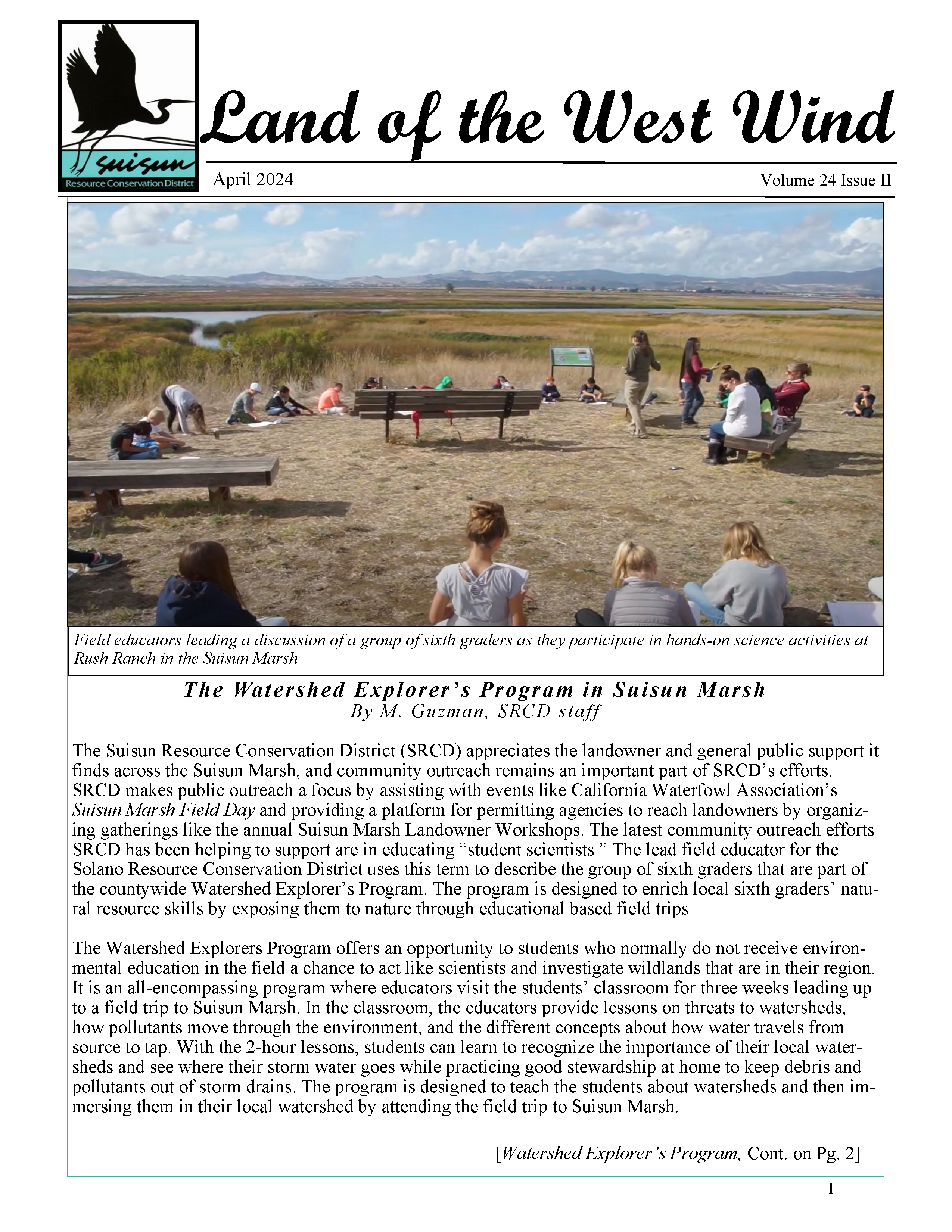Science
Increasing scientific knowledge to improve management of the Suisun Marsh is a goal of the SRCD. Translating science findings and disseminating them to landowners will lead to development of best management practices for wildlife populations and wetland habitats.
People and History
During the past century, many wetland areas of the San Francisco estuary were proposed for filling and development as the region’s population grew (see Manfree 2015, Suisun Marsh threats). However in many cases, individuals or conservation groups fought to retain the natural character of the Bay Area and were able to convince others to stop destruction of the wetlands. In Suisun Marsh, hunters have led conservation efforts to protect this unique region for more than a century. However, as demographic changes occur in the future, the question becomes, who will mind the marsh (Kaminski et al. 2017)?
Restoration
In the San Francisco Bay and Delta, wetlands are recognized as novel ecosystems that have been greatly affected by human activity (Moyle et al. 2016). Restoration of wetlands will not return historical conditions before humans were present, because the region is highly altered and urbanized (Nichols et al. 1986). Instead, restoration in the estuary now typically refers to projects that return tidal flows to areas with little or no water control. In comparison, water in managed wetlands is controlled to create or enhance desired communities.
 Project Tracker is a data entry tool for uploading and editing information on wetland restoration, mitigation, and habitat conservation projects throughout California. Once projects are approved for public display by regional managers, they can be viewed and downloaded along with other projects and data layers on EcoAtlas.
Project Tracker is a data entry tool for uploading and editing information on wetland restoration, mitigation, and habitat conservation projects throughout California. Once projects are approved for public display by regional managers, they can be viewed and downloaded along with other projects and data layers on EcoAtlas.
Values and Services
The managed wetlands of Suisun Marsh have long provided recreational value for hunters and fishers, but the region also supports many other values and services. Ecosystem services describe nature’s benefits that people obtain from a particular community of organisms and their environment. These benefits are divided into provisioning services that describe products obtained from ecosystems, regulating services including flood hazards and disease, cultural services such as recreation, and supporting services that produce the other services such as nutrient and water cycling (Millennium Ecosystem Assessment 2005). A recent study concluded that ecosystem services value of U.S. wetlands is $30,517 to $427,243 per acre per year, producing a total annual benefit of $2.7 billion (Adusumilli 2015).
Suisun Marsh managed wetlands provide values and services which include:
- protecting the Delta from salt water intrusion
- mitigating climate change by sequestering carbon
- producing food for endemic fishes
- enhancing natural biodiversity
- supporting hunting and fishing traditions
- flood protection
To mitigate for climate change effects, wetlands provide important value by sequestering carbon in the wetland plants.
Wetlands
The flora of Suisun Marsh includes both native species that occurred here historically and other plant species that have invaded or been introduced. San Francisco is known as one of the world’s most invaded estuaries (Nichols et al. 1986), and this includes the Suisun Marsh region. Suisun Marsh is the largest brackish marsh on the Pacific coast.
Marsh Vulnerability in the San Francisco Bay-Delta Estuary (arcgis.com)
Wildlife
Suisun Marsh supports a wide diversity of wildlife including waterfowl and other waterbirds, numerous fishes, mammals, herptiles, and invertebrates. Restoration of wetlands will not return historical conditions before humans were present, because the region is highly altered and urbanized (Nichols et al. 1996 [ADD TO REFS]). Instead, restoration in the estuary now typically refers to projects that return tidal flows to areas with little or no water control. In comparison, water in managed wetlands is controlled to create or enhance desired communities.
References
Managed Wetland Assessment Final Report
SRCD Five-Year Long Range Plan (January 2018)
2024 Suisun Marsh Vegetation Guidebook
- Arnold, T., R. Clark, D Koons, and M Schaub. 2018. Integrated population models facilitate ecological understanding and improved management decisions. J. Wildl. Manage. 82:266-274.
- Bureau of Reclamation and U. S. Fish and Wildlife Service. 2014. Suisun marsh habitat management, preservation, and restoration plan. Final Environmental Impact Statement /Environmental Impact Report. Vol. Ia: Main Report, Executive Summary and Chapters 1-5. Sacramento, CA: https://www.usbr.gov/mp/nepa/includes/documentShow.php?Doc_ID=8683 (accessed February 2018).
- Byrd, Elizabeth, John G. Lee, Nicole J. Olynk Widmar. 2017 Animals. Perceptions of Hunters in USA. MPDI Animals 7:83-97.
- De Sobrino C., C l. Feldheim, and T. Arnold, 2017. Distribution and derivation of dabbling duck harvests in the Pacific Flyway. California Fish and Game 103(3): 118-137
- Casazza, M. L., C. T. Overton, T. D. Bui, J. Y. Takekawa, A. M. Merritt, and J. M. Hull. 2016. Depredation of the California Ridgway’s rail: causes and distribution. Proc. 27th Vert. Pest Conf: 226-235.
- Collins, Daniel P.,Warren C. Conway, Corey D. Mason, and Jeffrey W. Gunnels. 2017. Diet of wintering blue-winged teal, green-winged teal, and northern shoveler in east-central Texas. Wildfowl 67:87-99.
- Feldheim C.L., J. T. Ackerman, S. L. Oldenburger, J. M. Eadie, J. P. Fleskes, And G. Yarris. 2018. California mallards: a review. California Fish and Game 104(2): 49-66
- Humburg, Dale D., Michael G. Anderson, Michael G. Brasher, Michael F. Carter, John M. Eadie, David C. Fulton, Fred A. Johnson, Michael C. Runge, and Mark P. Vrtiska.2018. Implementing the 2012 North American Waterfowl Management Plan revision: populations, habitat, and people. Journal of Wildlife Management 82:275–286.
- Kaminski, R. M., D. N. Koons, T. E. Moorman, J. M. Eadie, W. C. Conway, J. B. Davis, K. L. Guyn, D. Howerter, S. A. Petrie, B. M. Ballard, J. N. Straub. 2017. Delta Waterfowl. Who will mind the marsh? Unpublished Report. 8 pp.
- Knowles, Noah. 2010. Potential inundation due to rising sea levels in the San Francisco Bay region. San Francisco Estuary and Watershed Science 8:1–19.
- Manfree, Amber. 2015. Landscape change in Suisun Marsh. Unpubl. PhD Dissertation. University of California, Davis, CA. 129pp.
- Millennium Ecosystem Assessment, 2005. Ecosystems and Human Well-being: Synthesis. Island Press, Washington, DC.
- Moyle, P., L. Brown, J. Durand, and J. Hobbs. 2016. Delta smelt: life history and decline of a once-abundant species in the San Francisco estuary. San Francisco Estuary and Watershed Science 14.
- Moyle, Peter B, Amber D Manfree, and Peggy L Fiedler. 2013. The future of Suisun Marsh as mitigation habitat. San Francisco Estuary and Watershed Science 11 (3).
- Vistainer, Tammie A., Stephen M. Bollens, and Charles Simenstad. 2006. Community composition and diet of fishes as a function of tidal channel geomorphology. Marine Ecology Progress Series 321:227–43






